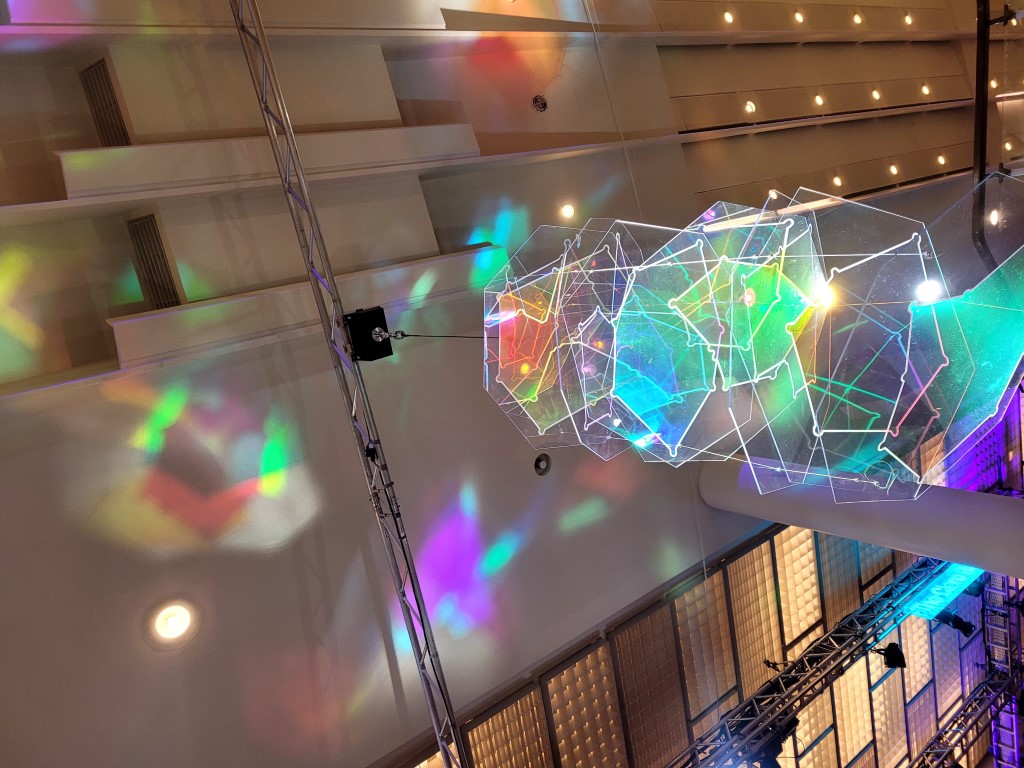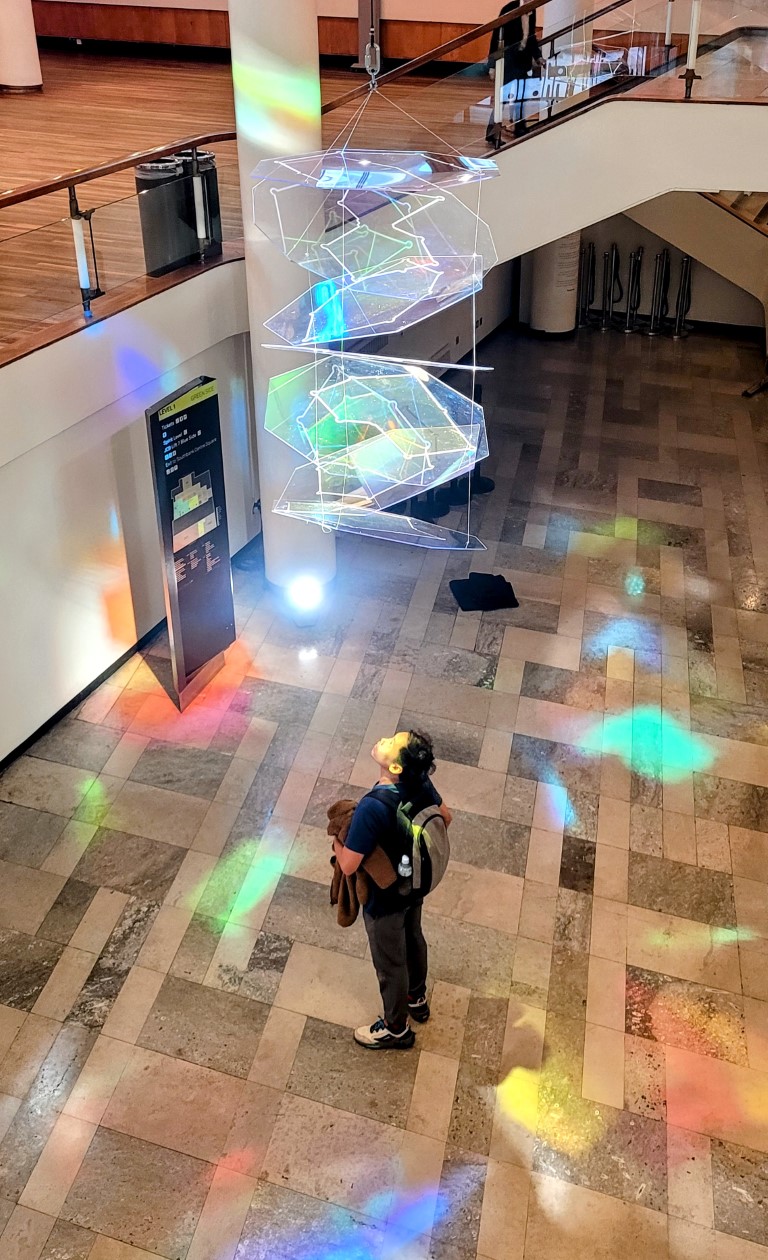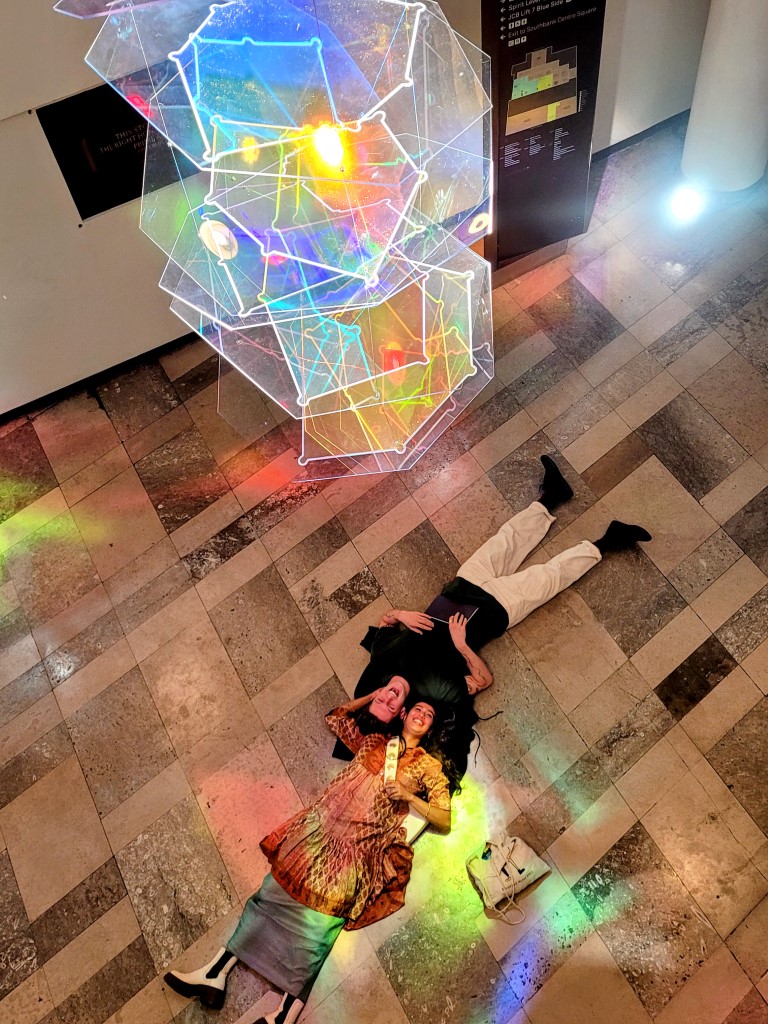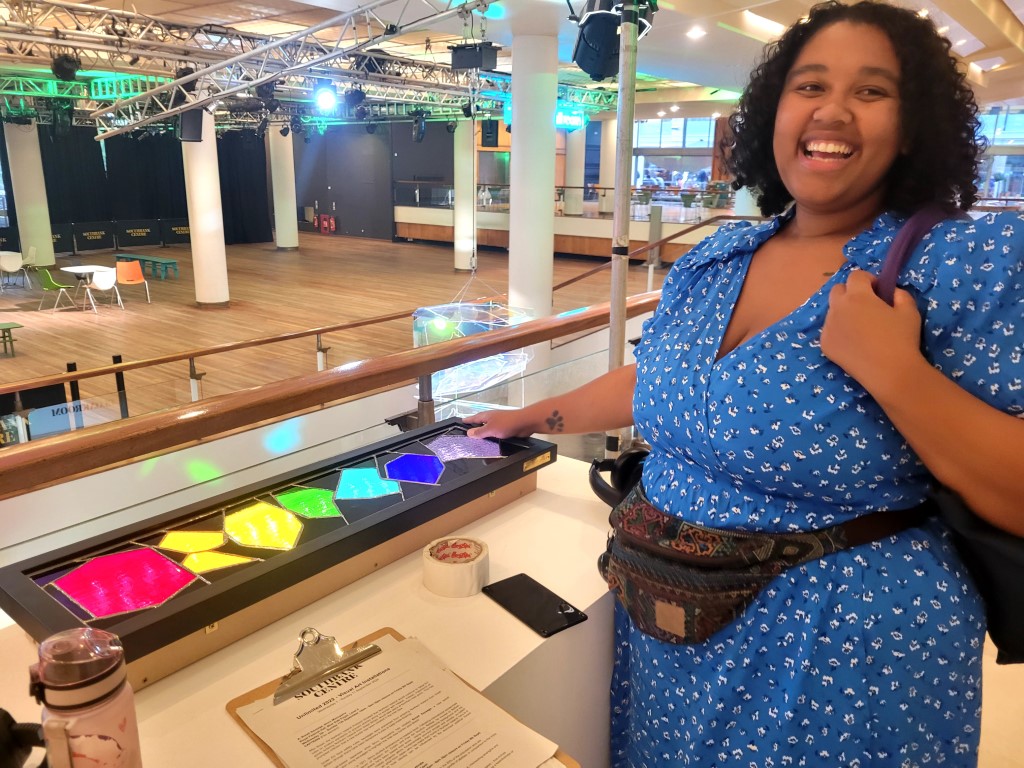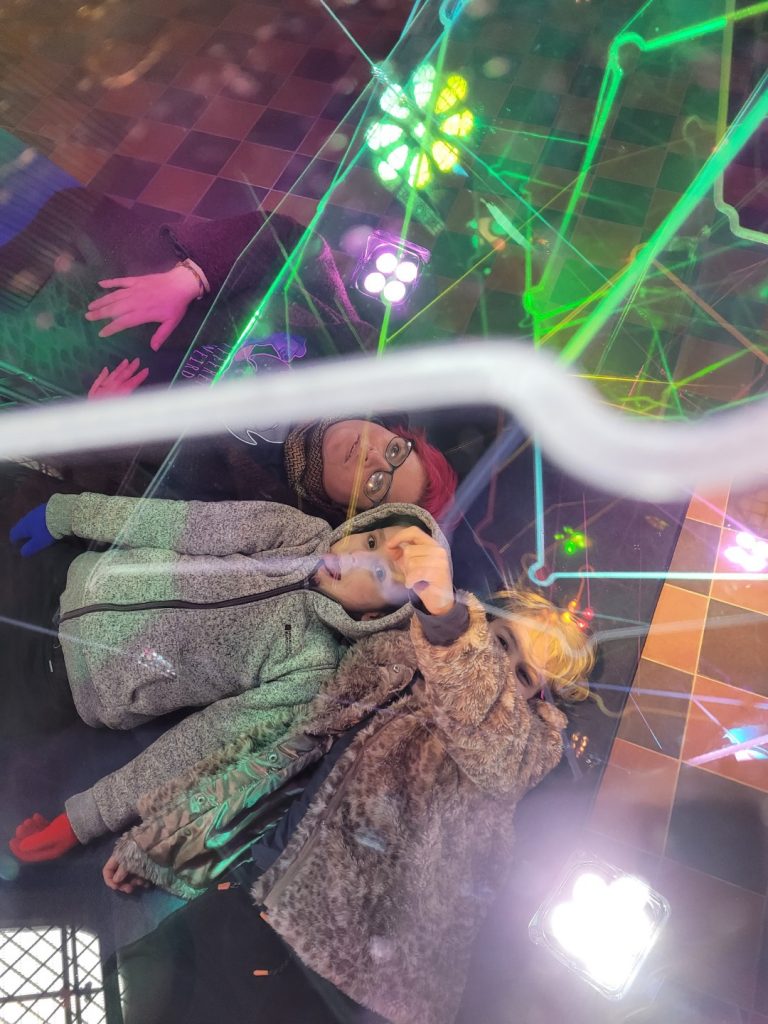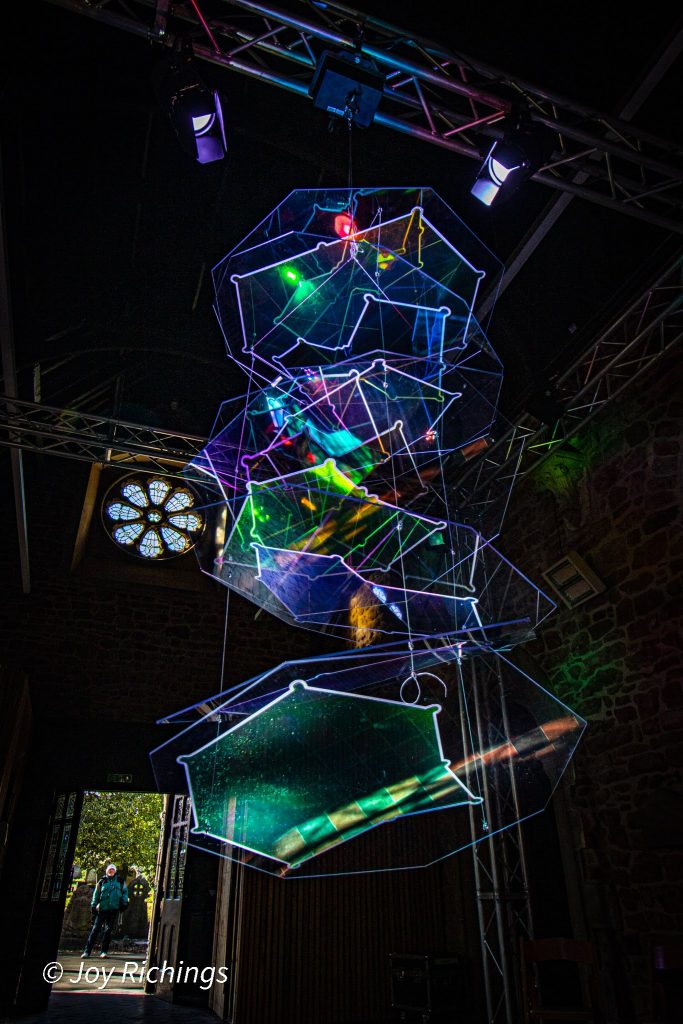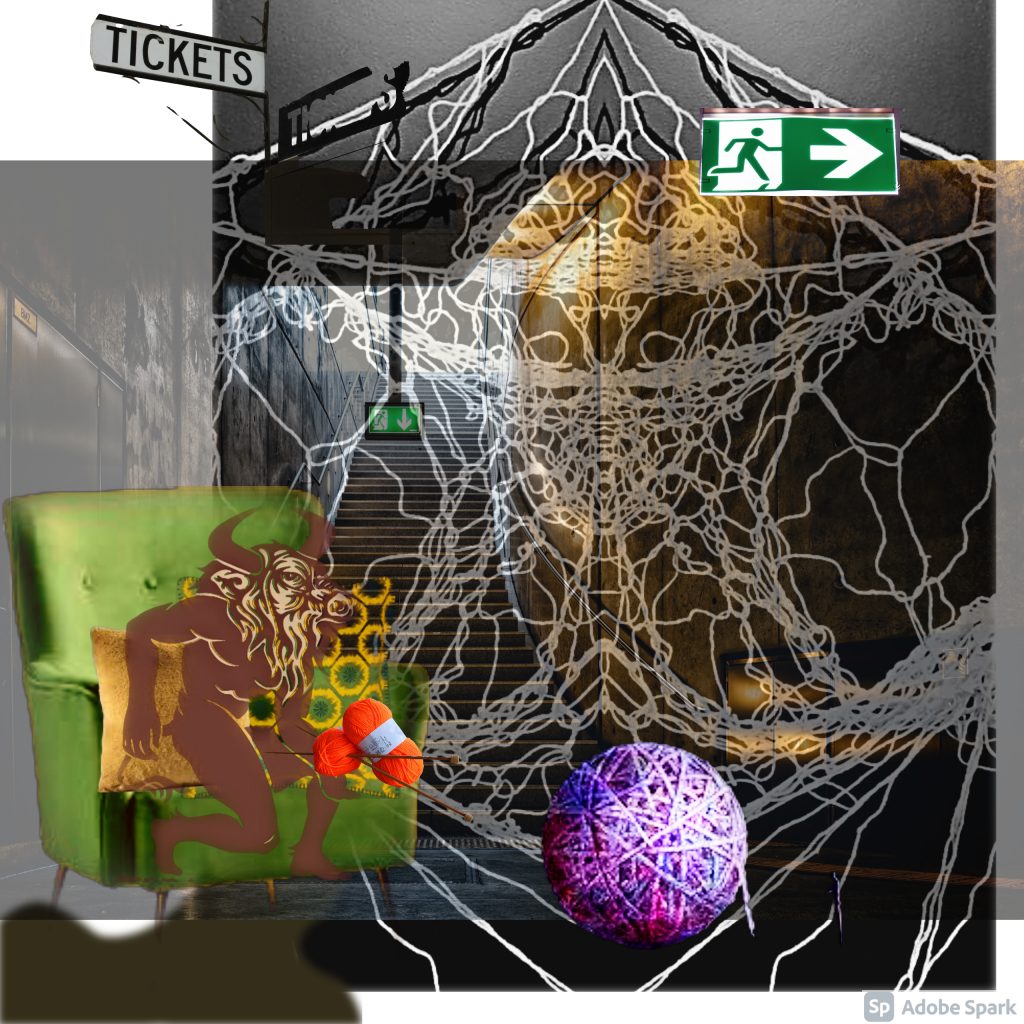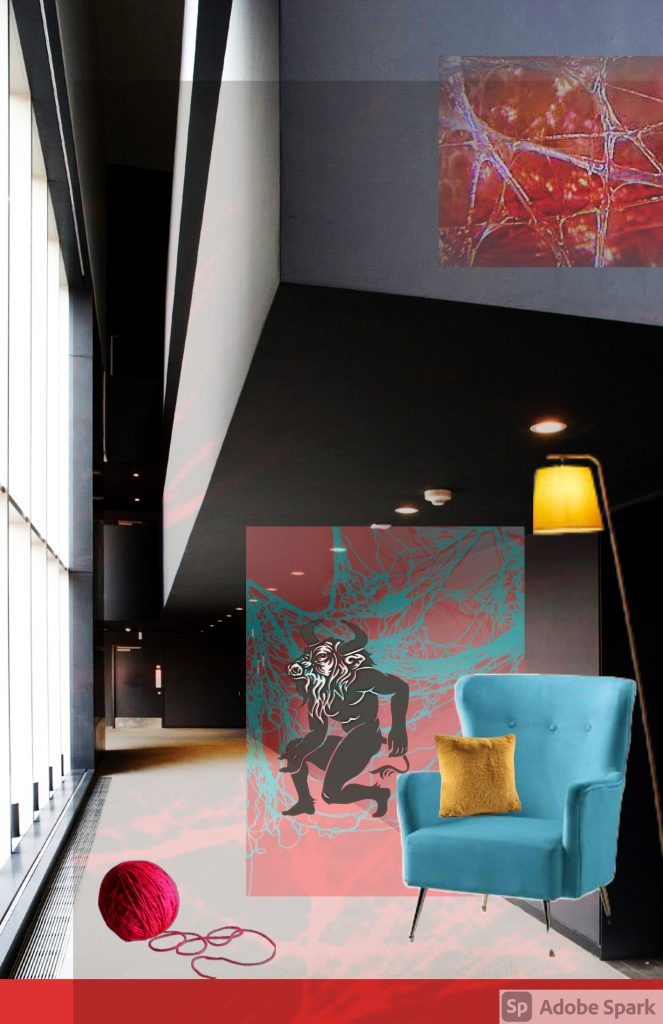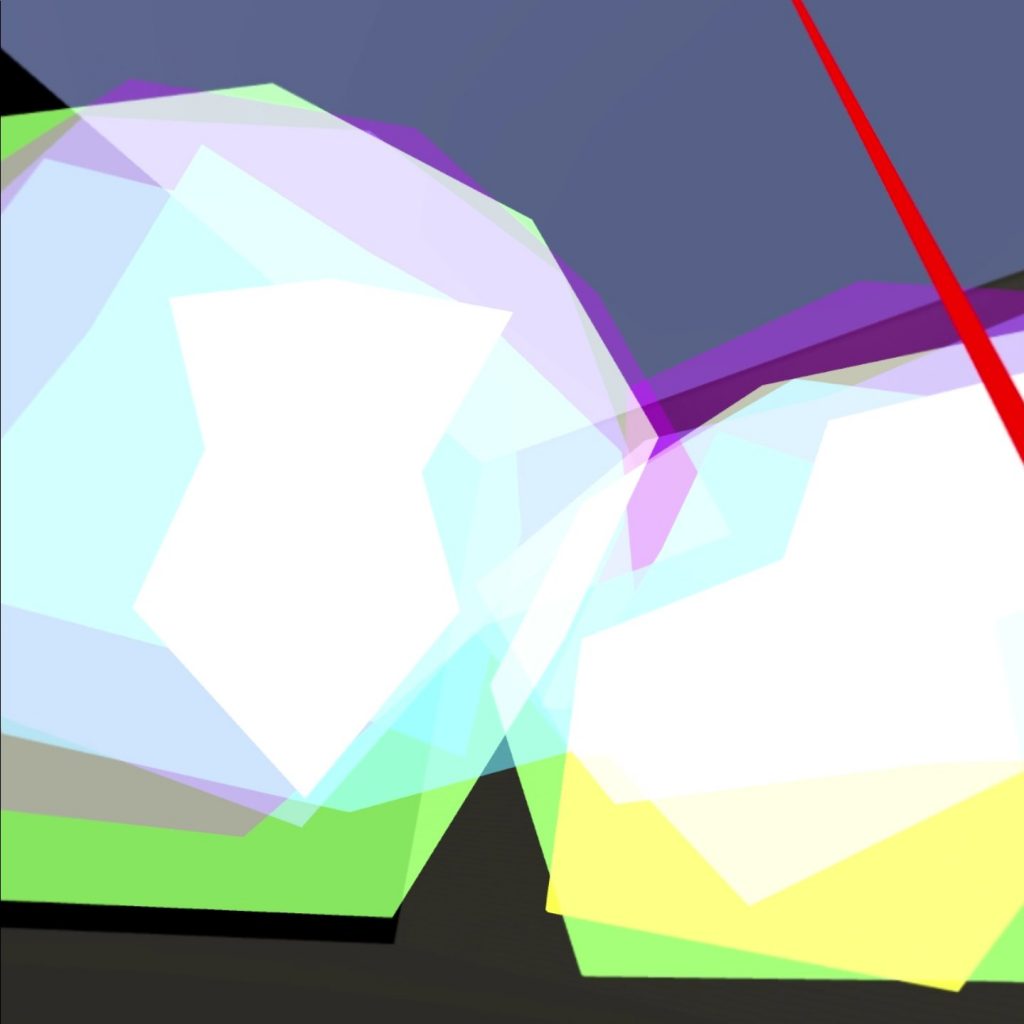We are compelled to find resonance in space and time and place to feel real. The voiced expression of this connection – this liveness – this mutuality of experience – is story. And story sustains us, but it cannot replace the felt sense of temporal and spatial proximity. Collective bodily experiencing. Viscerally, the watching soma in this iteration is not in that screened live-ness and feels the frailty of secondary sensing.
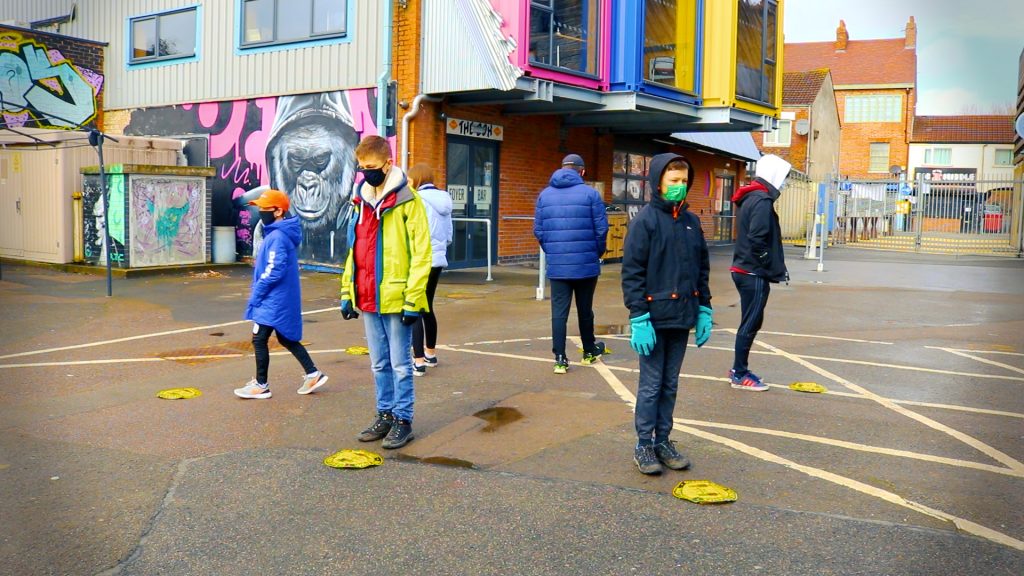
6 teens, wrapped up warm against the cold of February in Coventry Fargo Village!
Liveness - a short film response
My piece is called My Heart Cannot Hear Yours From Here. It’s a six minute film, which was made in Fargo village in Coventry during lockdown at the beginning of 2021.
(I’ve linked to the final piece at the bottom of this blog post. Keep reading!)
The performers are my own children and their cousins! We had originally intended to use professional dancers, but COVID restrictions didn’t allow that. But in the end I think that using untrained teenagers added a quality of ‘unawareness’ or gauche to the piece that works.

Heart connection
What is Liveness? …
My interpretation of the theme is that humans, as relational beings, experience ‘liveness’ along 3 dimensions of knowing. Space and Place and Time. Concepts that I could tease out in more detail another time! When one of those elements is not there, our sense of liveness is incomplete or changed in some experientially significant way.
I wanted to explore what happens to the quality of ‘liveness’ if we take one of those 3 elements away from a performance or a happening. I wanted to evoke a sense of the frailty of that secondary sensing; to ground this piece in not-live. Primarily, by having the performers be in separate ‘space’ and then coming together into the same ‘space’ (by which I mean into a distance where they can sense the presence of the other/s at a visceral level).
My Heart Cannot Hear Yours From Here - is obviously contextualised in the time of Covid. We used 6, two metre distancing markers set into a circle. Which is interesting to me in itself - two metre distancing as a protective measure but also 2 metres distance as harm - that which is lost in that specific distancing restriction, even beyond the obvious loss of direct touch.
Making Connections!
In my creative and research work I’m interested in themes of connection and how humans sense each other, as beings who are by nature designed to operate within community. And the idea for this piece came when I stumbled on some research that humans sense each other - apart from the 5 senses we immediately think about (smell, touch, hearing, taste, sight) - on a visceral nervous system or heart impulse level. But crucially, that this ‘sixth sense’ or electrical heart impulse only works to recognise another mammalian nervous system from a distance of three feet or one metre.
6 teenagers queuing on yellow 2 metre social distance markers arranged in a circle
So we start with a now very familiar scenario of queuing on 2 metre distance markers. The soundtrack is made up of cityscape sounds and also radio clips from this last year where nationwide isolating measures were announced - placing the film within this timeframe.
And then in the second half of the piece, the action shifts and the group turn to face out of their circle, and they step backwards towards each other. Moving into that critical sensing distance of 1 metre from each other, where they can become viscerally aware of each others’ bodies. It wasn’t necessary for them to literally face each other in order to make the point I wanted to make. There was something quite profound for me also about facing out into the environment - looking outwards rather than into that circle. But also we didn’t need to flout COVID restrictions by bringing people into each others’ breathing space in order for them to have that heart sensing connection. (There are certainly interesting things to say I think about that too, but it felt as though having them do that would confuse the message of this piece).
Sensing the other in shared space
Humans, like all mammals, can still detect each other even when we’re not engaging any of our other senses to connect. So if you’ve been in a crowded place - like a train station - you’ll recognise that feeling of being amongst so many unattuned somas and it can feel quite disconcerting some times with all the bodies around you.
As the teenagers in our film come into that shared one metre distanced sensing space my voice directs them to do a ‘heart lock-in’ technique - which is slowing down breathing to bring heart rates into sync so that you can feel safely attuned to another person or persons. And they are brought into heart connection with each other as a group. This heart connection exists and continues before story or narrative. It simply ‘is’ - for me, a visceral sense of ‘being’ because the soma is in relation to another. Into a space where their hearts can detect and become pleasantly attuned to the electrical impulse of those around them.

Foot stepping on yellow social distance marker
My intent was that the viewer, in experiencing the short film, might feel nostalgia and longing for coming into ‘liveness’ and being part of a human collective again. It’s the sensation of being sat next to someone you feel at ease with, or having a cat on your lap. In contrast to the feeling of ill - ease you might get being sat next to a stranger on a bus for example, or being up in the face of someone you don’t like! That can feel quite threatening to our nervous system. A gut sense if you like.
So we see the group coming out of isolation with themselves, to experience the relational sense of liveness of being part of a human collective again. As relational beings, we experience ‘liveness’ by being in the same space and place and time. And when one of those elements is not there, our sense of liveness is incomplete.
Getting together to make during lockdown
This piece was originally conceived as an installation and live action performance piece for another project which Covid prevented from happening. But in the end, filming it allowed for a greater breadth of exploration of what ‘liveness’ means, bringing in differential time and place, as well notions of space. I worked with a brilliant Coventry artist - Sherrie Edgar to film and edit. Sherrie is a film maker that works around themes of social isolation and loneliness - do check her work out.
We added in this sort of glitch effect to the film, at the beginning and end. So that as the audience is drawn into that nostalgic feeling of people coming physically back together - the teenagers put away their phones and move into the shared space - the technical screen interruption would bring the viewer back out of that sentiment, and back to an awareness that we are observing this action through a screen - that as viewers we are not in the same space and place and time as these actors; we are not in their shared liveness.
It seems to me that over this year of Covid, cultural offers are increasingly focussed on developing a sense of ‘being there’ by engaging all of the senses, into their design. The intent being to replicate the live experience, or to fully immerse, as distinct from establishing a shared sense of engaging in deliberate cognitive disbelief. I wanted instead to try to evoke a sense of the frailty of that secondary sensing; to ground it in not-live. To highlight what we miss when all of those elements are not there - in spite of contextual richness that is designed to convince us for a time that we are.
But I also wanted to offer a sense of hopefulness. A feeling of ‘not yet but soon’ - to preface ways of moving back into shared spaces together as collective gatherings become possible again.
I’m really honoured to be part of this permanent exhibition by Newcastle Performance Research Department. I’d love to hear your reactions to the piece!
